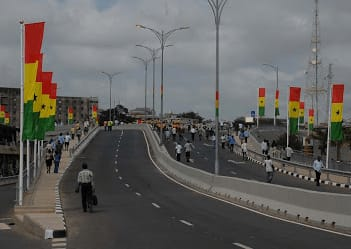Ghana has overhauled its petroleum revenue management system, directing all discretionary oil funds exclusively into infrastructure projects under sweeping amendments to the Petroleum Revenue Management Act (PRMA) signed by President John Dramani Mahama in April 2025.
The changes mark a major policy shift in how the country deploys its petroleum wealth, with 100 percent of the Annual Budget Funding Amount (ABFA) now earmarked solely for infrastructure investment. This replaces the previous framework, which spread petroleum revenues across sectors such as education, agriculture, and health.
At a virtual media engagement hosted by the Public Interest and Accountability Committee (PIAC), the coordinator at PIAC Isaac Dwamena Esq. described the reform as both “a bold opportunity and a significant risk” for Ghana’s long-term development. He noted that linking oil revenue to the government’s $10 billion “Big Push” infrastructure agenda could accelerate development but might also align spending too closely with political priorities rather than national strategy.
Under the amended law, ABFA funds that once supported initiatives like the Free Senior High School (Free SHS) programme are now restricted to infrastructure alone. The Free SHS initiative, which previously relied on petroleum funds for about 55 percent of its financing, will now draw on the Ghana Education Trust Fund (GETFund). Government has uncapped GETFund to release GH¢3.5 billion in 2025 to sustain the policy.
Education Minister Haruna Iddrisu acknowledged that the shift could strain GETFund’s traditional focus on educational infrastructure. “Redirecting GETFund to cover Free SHS costs will affect its core mandate,” he said, “but maintaining the programme is a national priority.”
The amendments fundamentally redefine how Ghana manages oil wealth. Whereas earlier versions of the PRMA required at least 70 percent of ABFA to go toward public investment with flexibility for other spending the new law allocates virtually all ABFA funds to infrastructure, except for a five percent share to the District Assemblies Common Fund, down from previous levels.
Several ongoing projects including the Tema Motorway expansion and some regional road works have reportedly been discontinued, raising concerns that the Big Push framework favours new, politically symbolic projects over completing existing commitments.
Observers also warn that the reforms give greater discretion to the government of the day. Without an overarching, long-term national development plan, petroleum funds risk being redirected with each administration, potentially undermining continuity and stability in public investment.
The amendment’s implications for transparency and accountability are equally significant. PIAC, the independent watchdog tasked with monitoring petroleum revenue use, has seen its operations severely constrained after losing its dedicated ABFA funding. Its 2025 budget was cut to GH¢4.6 million barely 22 percent of its projected needs.
As a result, PIAC has conducted only one regional engagement and two project inspections this year, compared to a target of 64. Key outreach activities, including public dissemination of its 2024 annual report, have been suspended. Civil society groups say this reduction in oversight comes at a time when scrutiny is most crucial, given the increased concentration of oil funds.
Further transparency issues have emerged in budget reporting. The 2025 Budget and mid-year review list projects funded through ABFA without specifying corresponding cost breakdowns, making it difficult for citizens to verify how petroleum revenues are being applied.
Economists caution that dedicating all ABFA funds to infrastructure could limit fiscal flexibility if oil prices fall or production declines. While the PRMA’s stabilization and heritage funds remain intact, the exclusive infrastructure focus may weaken Ghana’s ability to cushion future revenue shocks.
President Mahama has defended the reforms, saying the Big Push will deliver transformative national assets such as roads, bridges, health and education infrastructure, and agricultural facilities—worth $2 billion annually over the next five years.
Supporters argue that concentrating oil wealth on visible, long-term projects will ensure that petroleum resources leave a lasting legacy. “For too long, our oil money was spread too thin,” one government source said. “This time, we’re building infrastructure that will outlive the oil era.”
Source: energycrossroad.com




